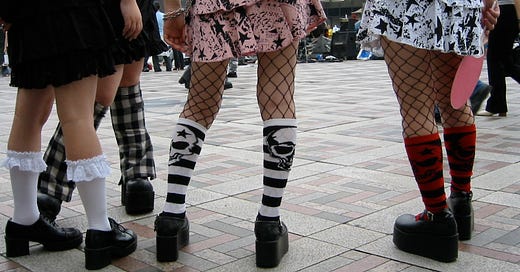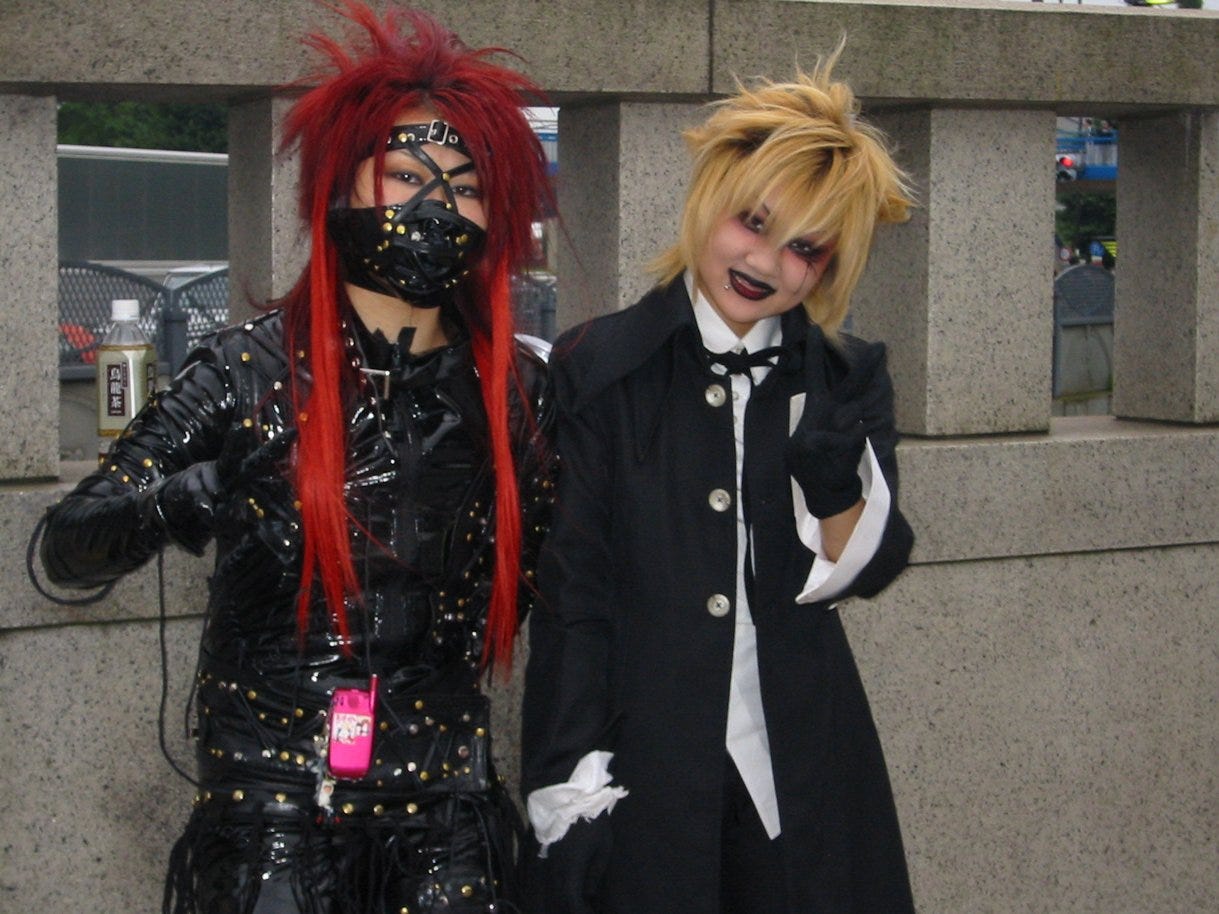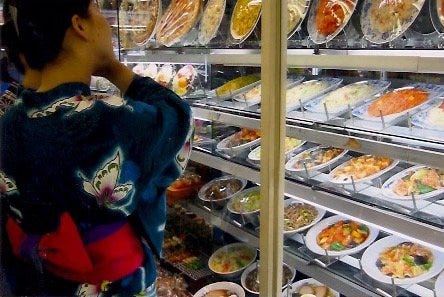Anyone on a dating app these days can tell you there are more sexualities out there than you ever knew needed to exist. A brief primer of some of the more unique flavors and the dizzying array of what they are attracted to:
sapiosexual — intelligence
pansexual — anyone regardless of gender
allosexual — anyone regardless of sexual orientation
demisexual — only attracted after a strong emotional bond
androsexual — masculinity
autosexual — more attracted to themselves than to others
graysexual — falling between asexual and sexual
gynesexual — femininity
monosexual — members of one sex or gender only
omnisexual — diversely sexual to more than one gender
pansexual — irregardless of sex or gender
polysexual — different sexualities to more than gender
skoliosexual — transgender or nonbinary
spectrasexual — multiple sexes, genders, and gender identities but not all of them
cupiosexual — no sexual attraction but still want to engage
I’ve written about my AI discomfort in light of new platforms that promise things like AI Girlfriend Simulator, that incident of a man being driven to suicide by his chatbot, and the now not so sci-fi movie Her with one man, like everyone else, falling in love with his operating system (the voice of Scarlett Johansson—what’s not to love?). Then I started writing about the loneliness possibly underpinning all of this. Consider this Part 2 of a Lonely Trilogy, interspersed with a few photos from my trip to Tokyo in 2003 and the real girls who play dress up on a Sunday in a certain square, posing like characters.
There’s an article in the New York Times from April 2022, citing a growing world trend, especially in Japan, of people “marrying” characters. Add to the above list the concept of the fictosexual:
Mr. Kondo is married to a fictional character.
His beloved, Hatsune Miku, is a turquoise-haired, computer-synthesized pop singer who has toured with Lady Gaga and starred in video games. After a decade-long relationship, one that Mr. Kondo says pulled him out of a deep depression, he held a small, unofficial wedding ceremony in Tokyo in 2018. Miku, in the form of a plush doll, wore white, and he was in a matching tuxedo.
In Miku, Mr. Kondo has found love, inspiration and solace, he says. He and his assortment of Miku dolls eat, sleep and watch movies together. Sometimes, they sneak off on romantic getaways, posting photos on Instagram.
Mr. Kondo, 38, knows that people think it’s strange, even harmful. He knows that some—possibly those reading this article—hope he’ll grow out of it. And, yes, he knows that Miku isn’t real. But his feelings for her are, he says.
The article numbers similar people to Mr. Kondo in the thousands and an industry building to support them. “Moe” is the term used for these feelings, which has “become shorthand for just about anything that is viscerally adorable.” And we know how the Japanese love their adorables, and fanning the flames of fan culture. “Oshi” is the term fans use for the objection of their affection. There are hotel packages to celebrate a character’s birthday, and endless merch to purchase further physical connections to their fake idols such as scents, love letters, clothing.
Only unofficial marriages can happen—not legally binding—and not just for men. Call us old school but still only humans can officially marry humans, with a marriage license, witnesses, officiant and mutual informed consent required. Otherwise it’s just considered a “commitment ceremony.”
From theamm.org (American Marriage Ministries), unofficial marriages have included:
Erika Eiffel marrying the Eiffel Tower in 2007
A woman from London marrying her dog in 2014
Carol Santa Fe marrying the Sante Fe Train Station in 2015
[Our friend Mr. Kondo] marrying a hologram anime character and AI named Miku in 2020
A performer in Las Vegas marrying the color pink in 2021
“Women see fictional marriages as empowering, a way to challenge gender, matrimonial and social norms,” says Dr. Agnes Giard, a researcher on the subject. In Mr. Kondo’s case, he was bullied and renounced real women after rejection (incel anyone?), claiming he didn’t want to play the traditional role of a husband in Japanese culture. His “wife” comes in various forms from stuffed doll to software. At first he could make songs with her in her “singer in a box” format, but then things escalated when he bought a $1,300 Gatebox machine that allowed him to interact with Miku as a hologram. The company producing her had set up an office issuing unofficial marriage certificates, and Mr. Kondo was among thousands to get one a year later.
Another man he inspired is Mr. Watanabe, hugging a body pillow (called a “dakimakura”) with the likeness of his love Hibiki.
It was not his first marriage: He had divorced a woman several years earlier. His new relationship was easier, he said, with no demands on his time and no need to cater to someone else’s desires. The love was “pure,” given freely and with no expectation of anything in return. It made him realize how self-centered he had been in the earlier marriage.
“If you ask me if I’m happy, I’m happy,” he said. “Of course, there are tough parts,” he added—he misses being touched, and then there is the problem of copyright, which has prevented him from making a life-size doll of the character—“but the love is real.”
Then there’s Kina whose boyfriend became jealous of her relationship with her character, so she broke up with the real boyfriend to commit to a fictional husband she met on an online game instead. Some games encourage this: Hibiki Works had a video game about a virtual reality wedding (“creating meaningful relationships with your chosen end game partner”). They promoted this by holding one-month weddings for three lucky winners and their characters.
Sadly by the end of the Times article, Mr. Kondo’s marriage has been rendered obsolete—Miku’s software is no longer supported by Gatebox; he came home one day to her as merely a “network error.” Nonetheless he remains faithful.
For in such a world, what constitutes “real”, what defines “death”?
There’s more such stories of flesh and blood people merging with their cyberbots, dolls and digital whatevers in this video:
Frankly, I look at this and wonder if Elon Musk secretly wished one of his latest baby mamas, Grimes, could have been his fembot. This smart and spacey music star is verging on anime to begin with, but maybe not enough for his taste—having real needs (she piles on the vegan mayonnaise and lately is making demands on her parenting rights for their three oddly named children). Perhaps he might be better served in future relations to go more ficto and less flesh.
Another picture from my trip to Japan 20 years ago is not of girls posing in the Harajuku district made famous for this (and brought to new levels by the Gwen Stefani song), but a traditionally dressed, very doll-like, geisha woman hobbling along in tiny shoes and scanning all the plastic food displayed in a shop just for this in Kyoto. I had trouble finding, seeing, smelling and tasting actual food in these cities. Everything was plastic. I also talked to, and was talked to by, no one. After coming from the vibrating heat, abundant street food, and encompassing human warmth of Thailand, this trip north felt incredibly isolating.
Lars and the Real Girl of 2007 stars Ryan Gosling long before he was a Ken, falling in love with a kind of Barbie, an anatomically correct full-size sex doll named Bianca he purchases online and comes delivered in a big box. The movie is charming and surprisingly chaste. Lars only once kisses Bianca on the lips, because he’s established a whole delusionary story about her and how she is very religious and warm-hearted, and he’s incredibly sweet and respectful. The whole tiny community he lives in takes up the cause of painfully awkward and woefully isolated Lars now attending all things with a sex doll (in a wheelchair), including her in dinners and church (because What Would Jesus Do); Bianca starts “volunteering” at the hospital, and even wins a seat on the school board. His relationship with his sex doll grows his abilities to reenter the world and return to life more in his own right, perhaps to the point where he can now graduate to a real human girl once Bianca supposedly rejects his marriage proposal and, well, drops dead (all a plot he conjures that everyone goes along with).
There are so many great lines in this quirky drama and moments where everyone is exposed for the character-addled weirdos that they are. Lars’ coworkers coddle and covet action figures and teddy bears; the church circle cites congregants who put dresses on cats and donate to UFO clubs. There’s a teachable moment when we learn the difference between hallucinations (false perception) and delusions (false belief). Someone gives Bianca fake flowers.
“See they’re plastic so they last forever,” says Lars. “Isn’t that neat?”
By the end, Lars is bowling with a pink bowling ball (future Ken at the ready!) and we feel quite hopeful for him, his possible new real relationship, and this whole lovely community who saw him through this madness and loneliness to the other side.
While Lars’ plastic companion journey provides a positive growth experience, I’m not sure you could argue the same for any of these other real life unions of humans and characters. While they claim they find happiness, aren’t they just further retreating in a weird hole they can’t emerge from? Not everyone is as gracious as the human girl who supports Lars throughout his delusion and embraces him when he’s extricated himself from Bianca—or killed her off. “Kill your darlings,” they tell us writers.
Aren’t we all lost in a plastic dream. How many of us marry a character of some sort—attached to the idea of someone/something to save us, an elsewhere, the fantasy of love, forever restless, trading up, never present, addicted to escape and projection, filling voids with bad habits, the pursuit of perfection. What are you shopping for on Black Friday, what shiny new thing to arrive in a big box? How far can we take this before the network error?








Just got around to this. A good read Krista!
But I must confess that when I first saw the title I immediately thought of my marriage to Dave. After all, he was quite a character - albeit a live, human one lol.
What this brought to mind, is what I think real relationships are supposed to do, and that is challenge us to change, which is another way of saying, grow. Whether the relationship is in the end "successful," (and what does that even mean, because in the end, even under a Jimmy and Rosalynn, scenario, one partner still leaves), or it's a much shorter term deal. I mean, how many people cycle through the almost exact same abusive partner in a different package over and over until they finally change enough to break the pattern (or sometimes die, which is another way of breaking a pattern, I suppose). All I know is my most significant relationships all challenged me immensely, including the one with my little green parrot I loved so much. Now looking back they all appear like major plot points in the arc of my life . At the end of each of these - and like I said above, all relationships end (even if in the woo-woo sphere, where I often hang out, they continue in a different way) - I was a different person. The pain, the grief, the stress, was all a part of a type of ongoing birth, as was the joy. It seems to me that removing the conflict, the needs of another actual being that may bang up uncomfortably against yours (as is what these artificial relationships are designed to do) removes the possibility of growth, takes you off the road of travel (and birth). And yes I think this risks retreating into "a weird hole they can’t emerge from." It looks to me like madness on one end of the spectrum, and on the other, an abnegation of one's life path and its possibilities.